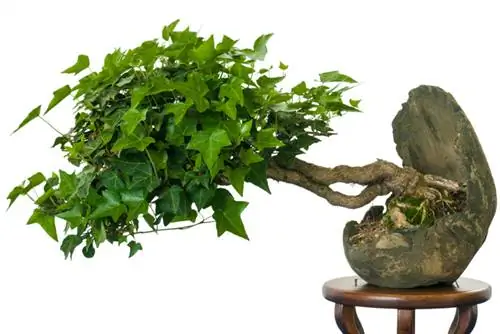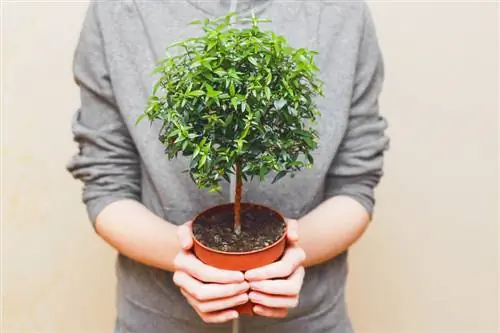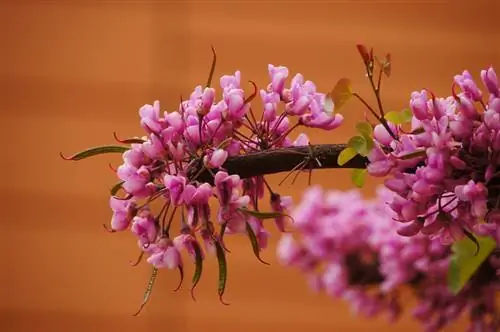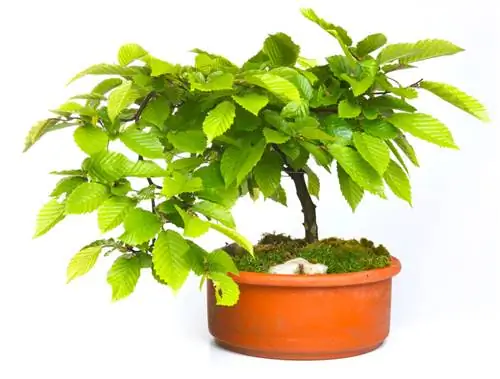- Author admin [email protected].
- Public 2023-12-16 16:46.
- Last modified 2025-01-23 11:20.
Ivy is not often seen but is very decorative if it is not kept as a climbing plant but as a bonsai. Like all plants that become woody over time, ivy can be cut into many shapes. How to grow and care for an ivy as a bonsai.
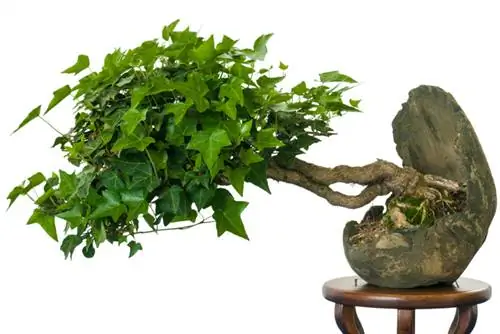
How do you care for an ivy bonsai?
An ivy bonsai can be cared for through regular cutting, wiring, watering, fertilizing and repotting. The plant prefers a shady to semi-shady location and should be supplied with bonsai liquid fertilizer. Every spring the ivy bonsai should be repotted and the root ball cut back.
Ivy bonsai in almost all designs
Ivy tolerates cutting extremely well. Whether you just shorten shoots or cut into old wood - ivy is almost indestructible. The bonsai specialist takes advantage of this fact and creates unusual bonsai shapes.
The only shape that cannot be cut is an upright posture. You can create very beautiful cascades with ivy.
Location for ivy as a bonsai
You can easily care for ivy as a bonsai outside. Choose a shady to semi-shady location.
Cut back up to three times a year
To cut ivy as a bonsai, the plant is shaped up to three times a year. Cutting takes place from spring to summer. Smaller cuts are possible at any time.
Ivy also tolerates wiring well. Even older, woody shoots can still be wired. The best time for this is April, when the plant begins to grow.
Care properly for ivy as a bonsai
- Pouring
- cutting
- fertilize
- repotting
It is always watered when the surface of the soil has dried out. Waterlogging should be avoided. The root ball must not dry out completely.
Unlike ivy outdoors, ivy as a bonsai needs regular fertilizer. But you shouldn't overdo it. Use a liquid fertilizer for bonsai (€4.00 on Amazon) according to the instructions. Fertilization takes place from March to September.
Repot ivy regularly
Ivy in bonsai form should be repotted every spring. The root ball is cut back heavily to keep the plant small.
A mixture of one part potting soil, one part pumice or lavalite and one part akadama is recommended as a substrate for ivy as a bonsai.
Tip
Ivy is a very robust plant that can live up to 500 years. Over time it develops from a climbing plant with long tendrils into a shrub and later even a tree.

